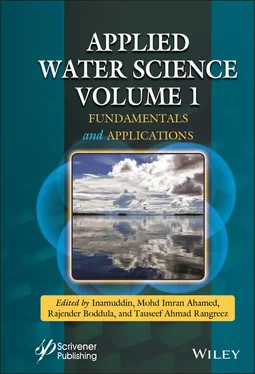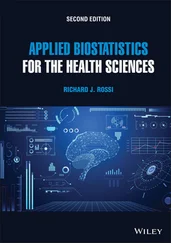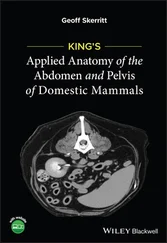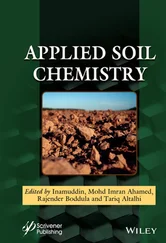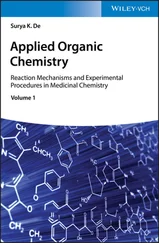Most wastewater treatment plants use primary screening, aerobic and anaerobic digestion, and biological filtration processes. Although these plants are not designed to remove pharmaceuticals, they can moderately remediate them. Many pharmaceutical compounds cannot effectively adsorb onto activated sludge, and microbes used in secondary treatment cannot completely digest them (Patel et al., 2019). In addition, xenobiotics inhibit microbial activity, hence their incomplete removal (Tsoumachidou et al., 2017). The variations in the removal of pharmaceutical compounds are influenced by the chemical structure, design of the treatment process, and the physico-chemical characteristics of the source water, which is a function of seasonal variation. The hydrophobicity of the pharmaceuticals influences their removal. For instance, while polar compounds have very low removals (7%–10%), pharmaceuticals with medium polarity exhibit higher removals (Patel et al., 2019). Thus, the treatment method, plant design, residence time, seasonal variation, and operating conditions influence the degradation of pharmaceuticals in wastewater treatment plants. Whereas biodegradation mainly occurs when the pharmaceutical compounds are in solution, the adsorption process involves electrostatic attractions and/or hydrophobicity, and the content of suspended matter (Rosales et al., 2017; Patel et al., 2019). At neutral pH, acidic pharmaceutical compounds ionize to the conjugate base decreasing the adsorption on sludge. However, basic and zwitterionic pharmaceutical compounds exhibit significant adsorption. Generally, the degradation of pharmaceutical compounds increases with increasing residence time. Compared to pharmaceuticals with short and linear side chains, long and branched pharmaceuticals are less susceptible to biodegradation (Patel et al., 2019). Aromatic and saturated aliphatic pharmaceuticals with sulfur and halogen moieties are also recalcitrant to biodegradation. The degradation of some pharmaceutical compounds significantly increases with the age of the sludge. Partitioning of the pharmaceuticals between the aqueous phase and sludge is influenced by the hydrophobicity of the compound; whereby highly hydrophobic pharmaceutical compounds are attracted, particularly to biosolids with a high concentration of organics (Wang et al., 2018).
Traditionally, biological methods have been used in the management of pharmaceutical effluent. Pharmaceutical compounds and their metabolites undergo both aerobic and anaerobic decomposition in wastewater treatment processes (Hou et al., 2019; Patel et al., 2019). For instance, microbial cultures can be used to degrade pharmaceutical compounds. Environmental biodegradation is particularly important for the degradation of pharmaceutical compounds, especially when wastewater treatment plants are ineffective (Patel et al., 2019). Microorganisms can biotransform pharmaceutical compounds through metabolic biodegradation or via co-metabolic processes with other compounds. Because certain strains of algae, bacteria, and fungus biodegrade pharmaceutical compounds, biodegradation can be achieved using algal, bacterial, and fungal cultures.
2.3.4.2 Advanced Removal Methods
Except for some very polar hydrophilic pharmaceuticals such as iodinated contrast media and sulfamethoxazole, most pharmaceuticals can be removed by adsorption of activated carbon (Patel et al ., 2019; Wu et al., 2019). Furthermore, pharmaceuticals can also be oxidized through advanced oxidation processes, of which ozonation is the most effective. Due to large pore sizes, low pressure membrane technologies such as ultrafiltration (UF) and microfiltration (MF) cannot effectively retain pharmaceutical compounds. Nonetheless, some hydrophobic pharmaceuticals can briefly adsorb onto the surfaces of MF and UF membranes providing a short-term decrease in concentration. The integration of MF or UF in membrane bioreactor systems does not result in additional removal of pharmaceuticals. On the other hand, high pressure membrane technologies such as RO and NF are effective in separating many pharmaceutical compounds from water (Motsa et al., 2014). The major drawback, however, is that brine with high concentrations of pharmaceutical compounds are difficult to manage post removal. RO, micro-, nano-, and UF have applied in the removal of pharmaceuticals. These are cross-flow filtration systems that use a selective semipermeable membrane. In RO, the pressure gradient between the permeate and feed sides of the membrane is the driving force, while ion repulsion is the major operational force in ultra- and nano-filtration since they use charged membranes (Motsa et al., 2014). To effectively remove pharmaceutical compounds, these physical techniques can be improved by integrating them with electrochemical advanced oxidation. While MF and UF can remove a significant level of pharmaceutical compounds, NF and RO exhibit higher removals (Colburn et al., 2019). Generally, NF has a lower energy demand since it uses lower operating pressures. Other methods like riverbank filtration and soil-aquifer treatment, which are natural processes with long retention times, can be included as extra treatment stages. The removal processes involved in riverbank filtration and soil-aquifer treatment are mainly biotransformation and adsorption.
2.3.4.2.1 Advanced Oxidation Processes
Highly reactive free radicals such as HO•, HO 2•, and O 2•, generated from hydrogen peroxide or ozone in combination with a catalyst or UV or γ radiation, can be used to degrade pharmaceuticals in water (Wang et al., 2019). Advanced oxidation processes use oxidants such as O 3separately, O 3integrated with O 3/H 2O 2, UV/H 2O 2, Fe 2+/H 2O 2, and Fenton degradation. The photon-initiated carbon-halogen bond breakage and superior HO• generation make these processes more effective than O 3on its own (Patel et al., 2019). Consequently, high removals of a range of pharmaceutical compounds from aqueous solution have been achieved. In addition, UV or visible radiation can produce reactive excited states of the pharmaceutical compounds. The major limitation of advanced oxidation processes, however, is the formation of toxic byproducts which can persist in the treated water (Patel et al., 2019).
There are two classes of photolytic treatments, namely, indirect and direct photolysis. Whereas direct photolysis involves the decomposition of pharmaceuticals following direct absorption of UV radiation, in indirect photolysis intermediate species such as reactive excited states and free radicals are generated through photosensitization or use of a photocatalyst (Patel et al., 2019). Subsequently, chemical reactions occur resulting in degradation. The efficiency of photolysis is influenced by the intensity and frequency of radiation, quantum yield, the chemistry of the pharmaceutical compounds, formation of the oxidant, and the composition of the aqueous system (Wu et al., 2019). Other photolysis processes are highly influenced by pH. A range of pharmaceutical compounds are degraded through indirect photolysis. Semiconductors such as TiO 2have been used as photocatalysts for the photodegradation of pharmaceuticals (Yahya et al., 2018; Cunha et al., 2019). The photocatalyst is activated by excitation of a valence band electron using light, to form an electron-hole pair. The holes thus generated exhibit high oxidation potentials, and can generate HO• from water on the surface of the photocatalyst. In general, TiO 2-based photodegradation results in high removals and considerable mineralization of pharmaceutical compounds.
Читать дальше
